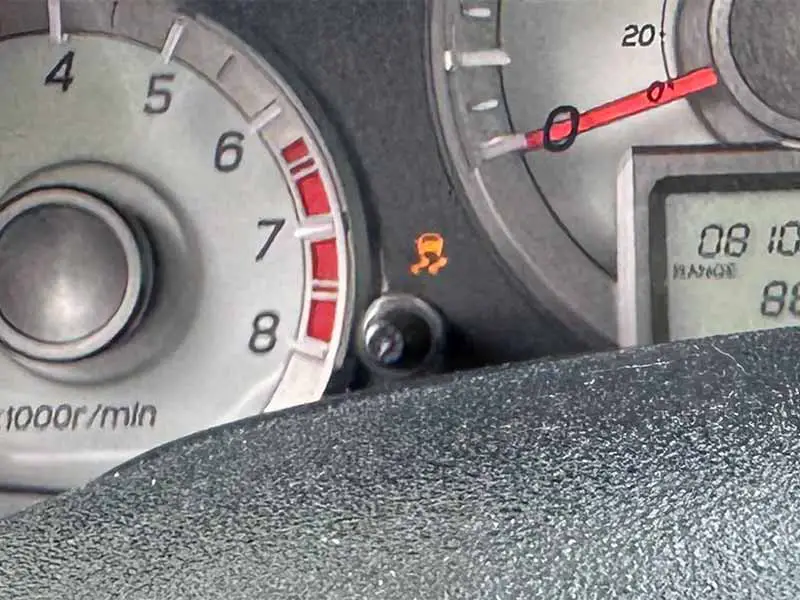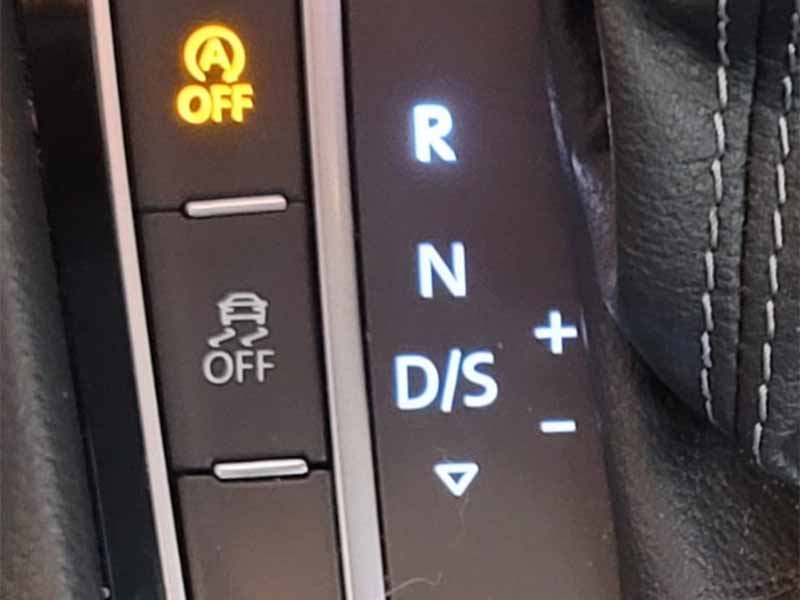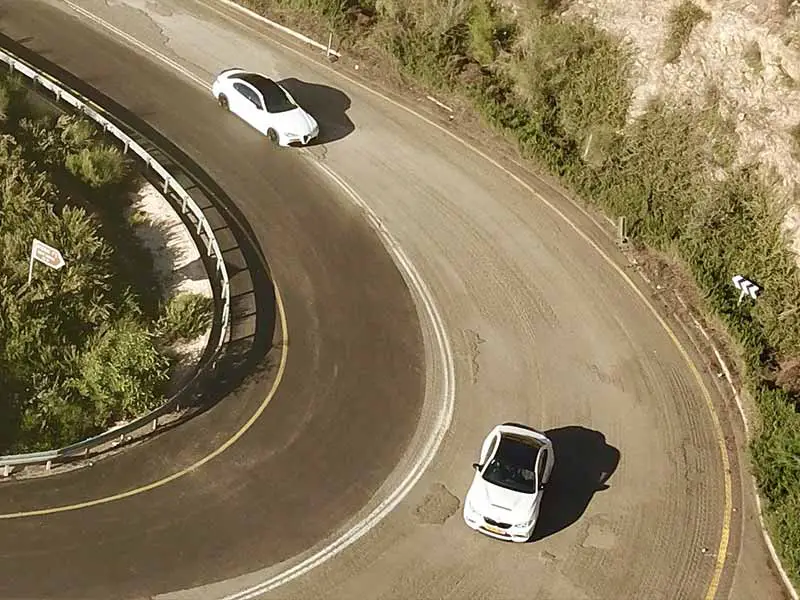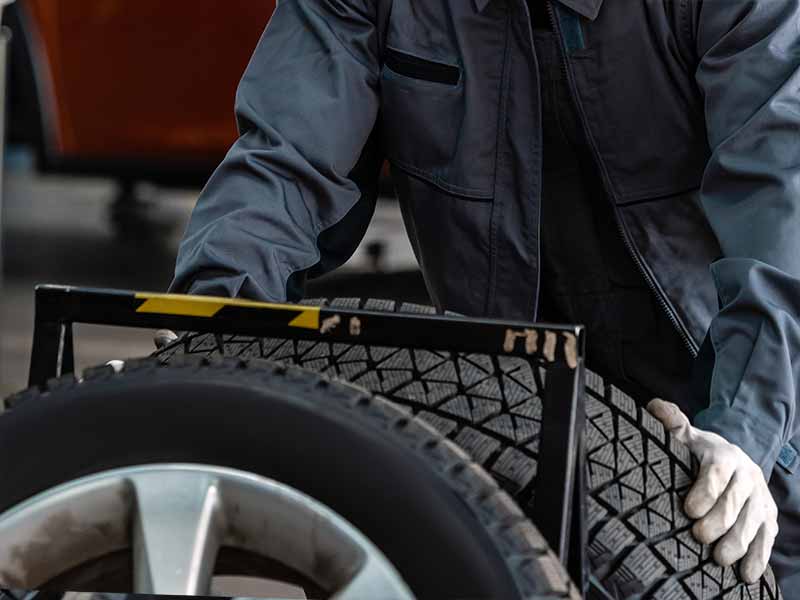Ever been puzzled by that little light on your dashboard that looks like a car skidding? It’s called the traction control light, and it can be a real mystery, especially if it decides to light up right after you’ve gotten new tires or rotated the old ones. But don’t worry, we’re here to unravel this automotive enigma for you.
Traction Control Light On After Changing Tires
The traction control light may come on after changing tires due to various factors such as new grip levels, sensor calibration, or even low tire pressure. Understanding these triggers can help you maintain optimal tire performance and vehicle safety.
In this article, we’ll delve into what traction control is, the critical role tires play in it, common reasons why the traction control light may come on, and how to reset it. We’ll also explore why new tires might cause your car to lose traction temporarily.
Let’s take a closer look.

The Role of Tires in Traction Control
Tires are like the shoes of your car; they’re the only part that actually touches the road. Just like you’d slip on a wet floor if you were wearing the wrong shoes, your car can slip on the road if your tires aren’t up to the task. That’s why they play a crucial role in your vehicle’s traction control system.
The Connection Between Tires and Traction Control
Your car’s traction control system relies heavily on the condition and type of tires you have installed. Here’s how they’re connected:
- Tire Tread: The pattern on the surface of your tires helps grip the road. If the tread is worn out, the sensors in the traction control system may detect less grip and activate more frequently.
- Tire Pressure: Proper tire pressure ensures that your tires can grip the road well. Low or high tire pressure can cause the traction control system to kick in because the tires aren’t performing as they should.
- Tire Type: Different types of tires (summer, winter, all-season) have different capabilities. The traction control system adjusts its behavior based on what kind of tires you have.
How New Tires Affect Traction Control
When you get new tires installed, you might notice that your traction control light comes on more or less frequently. This is normal and here’s why:
- New Tread: New tires have deeper tread, which may provide better grip. Your traction control system might activate less often as a result.
- Different Tire Characteristics: If you switch to a different type of tire, your traction control system will need some time to adapt to the new grip levels.
Monitoring Tire Pressure
One of the key features that work alongside your traction control system is the Tire Pressure Monitoring System (TPMS). This system keeps an eye on your tire pressure and alerts you if it’s too low or too high. Proper tire pressure is essential for the optimal functioning of your traction control system.
- Low Pressure: If tire pressure is low, the tire’s grip on the road decreases, causing the traction control system to activate.
- High Pressure: Overinflated tires can also cause problems. They make less contact with the road, which can trigger the traction control system.

Common Reasons for Traction Control Light Activation
The traction control light on your dashboard is like a messenger. It’s there to tell you that your car’s traction control system is either active or there’s something that needs your attention. But why does it come on, especially after specific events like tire rotation or changing tires? Let’s dive in.
After Tire Rotation
Rotating your tires is a routine maintenance task that helps ensure even tire wear. However, you might notice the traction control light turning on afterward. Here’s why:
- Sensor Calibration: The wheel speed sensors may need some time to adjust to the new positions of the tires.
- Tread Depth Variations: If the tires have uneven wear, the sensors might detect different grip levels, triggering the light.
After Changing Tires
Getting new tires is exciting, but it can also be confusing when that traction control light comes on. Here are some reasons:
- New Grip Levels: New tires often have better grip, which might temporarily confuse the traction control system.
- Tire Size Differences: If the new tires are a different size than the old ones, the wheel speed sensors may detect a change in how fast the wheels are turning, activating the light.
Due to Low Tire Pressure
Low tire pressure is a common reason for the traction control light to activate. Here’s the connection:
- Reduced Grip: Low tire pressure means less grip on the road, making it easier for wheels to slip.
- Sensor Activation: The wheel speed sensors and the Tire Pressure Monitoring System (TPMS) work together. If the TPMS detects low pressure, it can trigger the traction control system.
Other Factors
While this article focuses on the role of tires, other factors can also cause the traction control light to come on:
- Dirty or Damaged Sensors: Wheel speed sensors can get dirty or even damaged, affecting their ability to send accurate data.
- Electrical Issues: Sometimes, electrical problems in the car can trigger the traction control system.
What to Do When the Light Comes On
If the traction control light comes on and stays on, here are some steps to consider:
- Check Tire Pressure: Always start by checking the tire pressure and adjusting it as needed.
- Inspect Tires: Look for uneven wear or damage that could affect grip.
- Consult the Manual: Your car’s manual often has troubleshooting tips for the traction control system.
- Visit a Mechanic: If the light stays on, it’s a good idea to get a professional diagnosis.

How to Reset the Traction Control Light
Sometimes, even after you’ve addressed the issue that caused the traction control light to come on, the light stays on. This can be annoying and might make you wonder if something is still wrong. Resetting the light can help you ensure that your traction control system is functioning correctly.
Basic Steps to Reset the Light
Resetting the traction control light isn’t usually complicated, but the process can vary depending on your car’s make and model. Here are some general steps you can follow:
- Turn Off the Engine: Start by turning off your car’s engine and removing the key from the ignition.
- Wait a Moment: Give it a few minutes. This allows the car’s computer to fully shut down.
- Restart the Engine: Turn your car back on. In many cases, this simple act can reset the traction control light.
- Check the Dashboard: Look to see if the traction control light has turned off. If it has, you’re good to go!
Advanced Resetting Techniques
If the basic steps don’t work, you might need to try some advanced techniques:
- Disconnect the Battery: Disconnecting the car battery for a few minutes can reset the car’s computer, including the traction control system.
- Use a Diagnostic Tool: Some cars require a specialized diagnostic tool to reset the traction control light. These tools can be purchased or sometimes rented.
- Consult the Owner’s Manual: Your car’s owner’s manual will have specific instructions on how to reset various lights, including the traction control light.
When to Seek Professional Help
If you’ve tried these steps and the light still won’t go off, it’s time to consult a professional. Here’s why:
- Persistent Issue: A light that won’t go off could indicate a more serious issue with your traction control system or wheel speed sensors.
- Safety Concerns: The traction control system is a critical safety feature. If it’s not working correctly, your driving safety could be compromised.

Why New Tires Might Cause Loss of Traction
Getting new tires can be both exciting and a bit concerning. While you look forward to better performance and safety, you might also notice some unexpected behaviors, like your car losing traction more easily. Let’s explore why this happens and what you can do about it.
The “Break-In” Period
New tires often have a “break-in” period, usually around 500 miles, during which they may not offer optimal traction. Here’s why:
- Release Agents: Manufacturers use substances called release agents to help remove the tire from the mold during production. These agents can reduce initial grip.
- Tire Mold Coating: New tires may have a shiny coating from the mold, which can be slippery until worn off.
Tread Depth and Water Channels
New tires have deeper tread and more pronounced water channels, designed to improve grip in wet conditions. However, these features can sometimes cause issues:
- Hydroplaning Risk: Deeper tread can trap more water, increasing the risk of hydroplaning in certain conditions.
- Reduced Contact Area: The new tread pattern may reduce the tire’s contact area with the road, affecting grip temporarily.
Tire Pressure Adjustments
New tires might require different tire pressure settings than your old ones. Incorrect tire pressure can lead to loss of traction. Always check the manufacturer’s recommended tire pressure for your new tires.
Compatibility with Existing Systems
Your car’s traction control may take some time to adapt to the new tires. During this period, you might experience:
- Frequent Activation: Some traction control systems may activate more often until it adapts to the new grip levels.
- Calibration Needs: Some vehicles may require recalibration of wheel speed sensors and the traction control system when new tires are installed.
What to Do If You Experience Loss of Traction
If you notice your car losing traction with new tires, consider the following steps:
- Drive Carefully: Be extra cautious, especially during the break-in period.
- Check Tire Pressure: Ensure the tire pressure is set to the manufacturer’s recommended levels.
- Consult Your Mechanic: If the issue persists, it may be wise to consult a mechanic for a thorough inspection and possible recalibration of systems.
Resources
Below are some links you may find helpful when learning about tires
- Traction control system: How it works and when to use it – Kelly Blue Book
- How to reset a traction control light (TCS) – WikiHow
Final Thoughts
Understanding why the traction control light comes on after changing tires is crucial for both your vehicle’s performance and your safety on the road.
From the importance of tire condition and pressure to the intricacies of wheel speed sensors and traction control systems, this article has covered the essential aspects you need to know.
So the next time that little skidding car icon lights up on your dashboard, you’ll be well-equipped to tackle the issue head-on.
Good luck and happy motoring.





